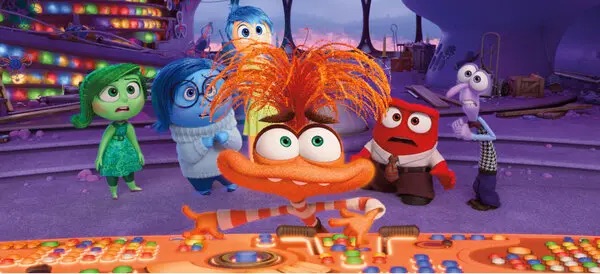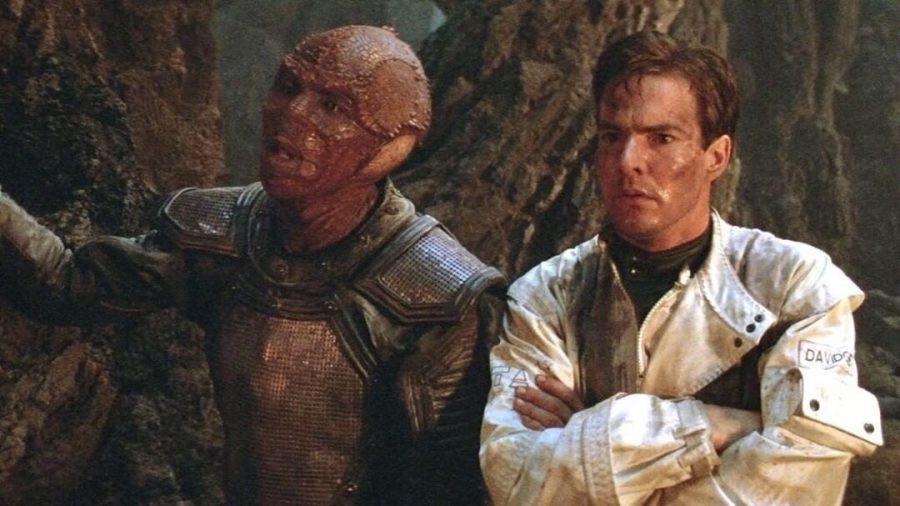Netflix just finally released their highly anticipated adaptation of the world’s longest-running manga “One Piece.” To the pleasant surprise of fans, the Netflix series is actually really good. Not only has it gotten positive reviews both from fans, but its amassed praise from newcomers to the franchise too.
Now, there’s a reason there have been so few live-action adaptations of anime shows in Hollywood. That reason is Dragon Ball: Evolution. Based off the world’s other long-running iconic anime, Evolution is the perfect example of what not to do when it comes to making an adaptation of anything. While there are many reasons it’s a bad film, I wanted to specifically contrast it with Netflix’s One Piece to show why the show has been so successful and where the film failed.
Creator’s Involvement
One of the major selling points of Netflix’s One Piece was the involvement of Eiichiro Oda, the creator of the original manga. This wasn’t just a superficial credit either, Oda was genuinely involved in almost every step of the production process. From the casting to the scripts, sets etc. According to the show-runners if there was a line of dialogue in the script that Oda didn’t like or felt didn’t fit, he would ask them to take it out and they would. The same would happen if there was a scene he thought could be better. He would ask for it to be reshot, and it the filmmakers would oblige. This showed incredible reverence to the source material.
Conversely (and obviously), Dragon Ball: Evolution had zero involvement or input from “Dragon Ball” creator Akira Toriyama. Toriyama. And he wasn’t given any real control over what was done to the property either. Word is that when he saw the final product he hated it so much he revived the manga that he had previously ended years before – out of pure spite.
Unafraid To Embrace The Goofiness
Believe it or not, “One Piece” was actually inspired by “Dragon Ball.” It makes sense considering that both are very action heavy, they’re both stories that existing in their own worlds and there is never any attempt to even try to make them feel realistic. Dragon Ball: Evolution was very afraid to lean into the latter. As a result, rather than faithfully adapting its source material, it tried to make things look “cooler.” Ultimately that did nothing but make the whole thing feel sillier than the actual anime.
In both “Dragon Ball” and “One Piece” there are characters that have vibrant hair colors and other exaggerated features for no real reason. In the Netflix series those details are unapologetically embraced. The only thing that didn’t fully make the transition in One Piece was Usopp’s nose. Still, there is a brief allusion to it at the end of Episode 4 where he joins the crew and creates his own flag. Dragon Ball: Evolution opted to remove those vibrant details that made fans love about those characters almost completely. Even if it was a small detail, it’s omission was a dismissal of what fans loved the most about the series: its goofiness. In “One Piece” they live in a world where snails are phones. In the live-action version they actually kept that concept. When asked why, the writers said, “This is how this world is, and you either accept it or you don’t.” The bottom line is that if something is done well people will accept it.
Perfect Casting
One major factor that has attributed to Netflix’s One Piece‘s success is it’s casting. Practically every character looks and feels exactly like their counterparts from the anime. That goes back to having the creator involved. Oda actually gave specific nationalities to his characters and the producers of the show tried to stay as close to that as possible. As a result, the characters in One Piece feel like they do in the manga and anime. With “Dragon Ball,” Toriyama once said his perfect casting for the character of Goku would’ve been a young Jackie Chan. In Dragon Ball: Evolution they cast white actor Justin Chatwin instead. Now, no offense to Chatwin’s abilities as an actor but this is another example of whitewashing in Hollywood.
While the live-action Luffy is a little more restrained compared to the source material, he’s still a big ball of energy. He still has an infectious optimism to him that inspires those around him. Conversely, in “Dragon Ball,” Goku is a character who loves to fight and is very lighthearted and fun. In Dragon Ball: Evolution he’s made into an angsty teenager who goes out of his way not to fight in certain situations. That goes back to what I said previously about the producers not wanting to lean into what made the source material so great. What’s the point of adapting something at all if it’s not going to do any sort of justice to its source material? That leads me to my final point.
A Clear Love Of The Source Material…
More than anything the biggest difference between these two adaptions is that the show-runners for One Piece are hardcore fans. From the first frame of the series to the last it’s abundantly clear that everyone involved loves the world and characters. Even if you know nothing about “One Piece,” you can just tell that a lot of love and care was put into it. Dragon Ball: Evolution on the other hand was made by people who have since admitted to knowing nothing about the manga or anime, and didn’t care about it at all.
Now, I don’t think it’s necessary for you to be a diehard fan of the source material if you’re making an adaption. At the very least, however, you should respect it and genuinely want to tell the best possible story. If all that matters to the makers is the monetary value fans will notice. On top of looking and feeling like a soulless cash-grab, it’s a surefire recipe way to ensure the adaptation is immortalized as a meme.








Leave a Reply